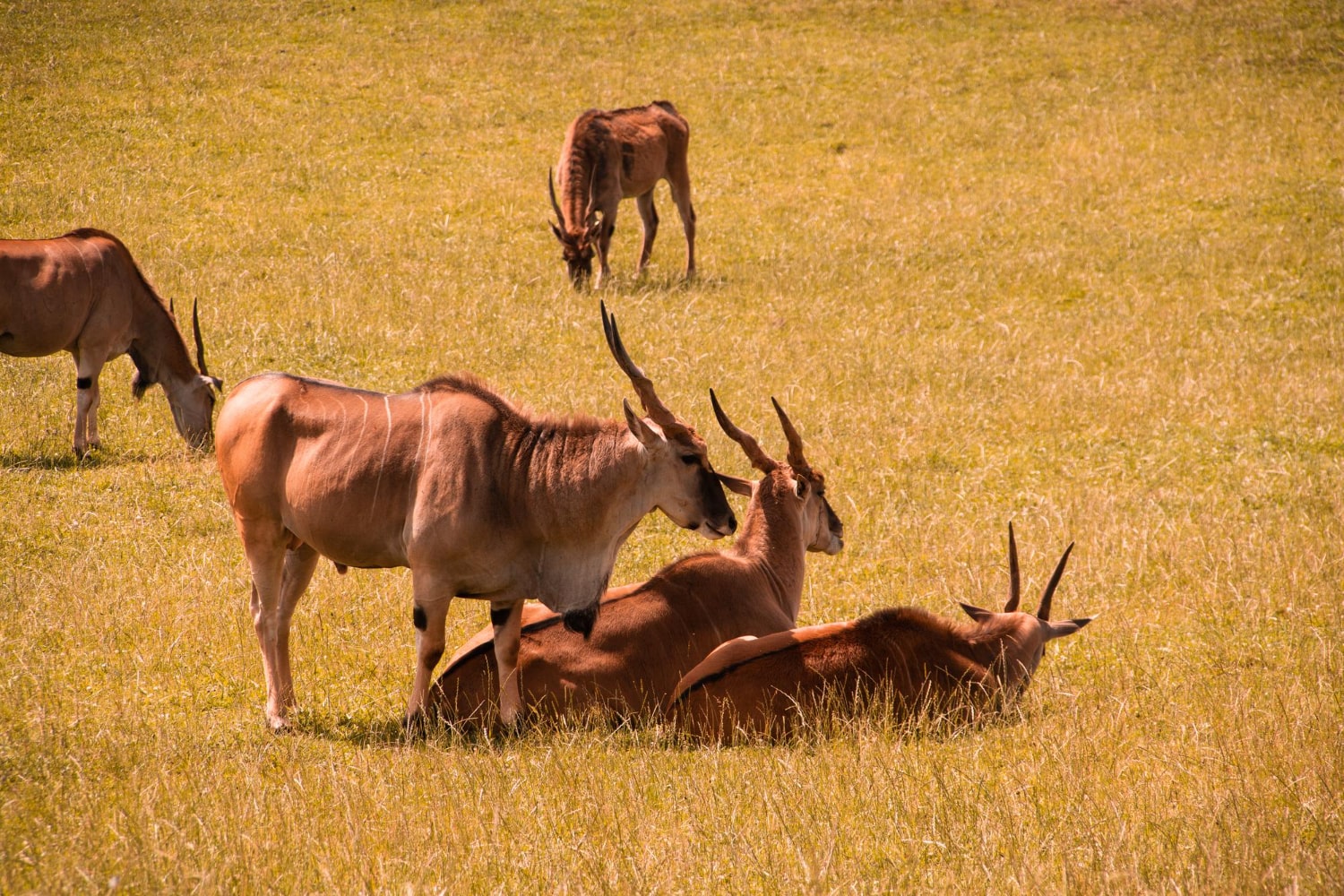Antelopes are among the most elegant and fastest inhabitants of savannas and steppes. They captivate with their grace, endurance, and remarkable diversity of species. These animals have become a symbol of African wildlife, although they also inhabit other continents. There are many fascinating and amazing facts about their lives and adaptations that you might not know. Below you will find a collection of interesting facts that reveal the extraordinary world of antelopes.
- Antelopes belong to the family of bovids, which also includes sheep, goats, and cattle. Unlike deer, their horns are not shed annually but remain for life. The age of an antelope can often be determined by the rings on its horns. Depending on the species, the horns may be spiraled or straight, resembling sharp spears.
- There are more than 90 species of antelopes in the world, most of which live in Africa. However, a few species are also found in Asia, such as the saiga in the steppes of Kazakhstan and Mongolia. This diversity makes antelopes one of the most numerous groups of hoofed mammals. Each species has developed unique adaptations to survive in its environment.
- The saiga is one of the most unusual antelopes because of its distinctive nose that resembles a trunk. It helps filter dust from the air in the steppes and warms up cold winter winds. This feature makes the saiga unique among hoofed animals. In addition, it is capable of migrating hundreds of kilometers during seasonal movements.
- The smallest antelope is the royal antelope, which lives in West Africa. It stands only about 25 centimeters tall at the shoulder and weighs no more than 3–4 kilograms. Despite its tiny size, it is extremely agile and can quickly hide in dense vegetation. It is often referred to as the “miniature beauty” of the savanna.
- The largest antelope is the eland, which can reach up to two meters in height and weigh over a ton. Despite its size, it is surprisingly calm and gentle, though it can run quickly when threatened. Elands are often hunted because their meat is highly valued. Interestingly, these giants can jump as high as two meters.
- Antelopes are among the fastest mammals on Earth. Thomson’s gazelles can reach speeds of up to 80 kilometers per hour, allowing them to escape predators. They are also remarkably enduring, capable of maintaining high speeds over long distances. This makes them true marathon runners of the savanna.
- Many antelope species have complex social structures. Some live in small family groups, while others form massive herds numbering thousands of individuals. Living in groups makes it easier to defend against predators and to find food. Dominant males often guard their harems from rivals.
- Different antelope species use different survival strategies when attacked by predators. Some rely on speed and agility to escape, others make sudden leaps to confuse the enemy. Certain species can even defend themselves with their horns. This variety of strategies greatly increases their chances of survival.
- Antelopes have excellent vision and hearing, which allows them to detect danger early. They can see long distances, and the position of their eyes gives them a wide field of view. They are also very good at detecting movement against a still background. This is one of the key reasons for their survival success.
- Some antelopes are well adapted to arid environments and can survive for long periods without water. They obtain moisture from the plants they eat and from morning dew. Certain species can even concentrate their urine to conserve body fluids. These adaptations allow them to live in the harsh conditions of deserts.
- The diet of antelopes is highly varied and depends on the species. Some prefer grasses, others feed on leaves and shrub shoots. There are species that can eat thorny plants, avoiding competition with other animals. This dietary flexibility enables them to occupy diverse ecological niches.
- Antelopes play a vital role in ecosystems. They are primary consumers of grasses, helping regulate plant growth. They also serve as prey for many predators, maintaining natural balance. Their presence influences the distribution and dynamics of other species.
- In the culture of different peoples, antelopes often symbolize grace, speed, and elegance. In African folklore, they are depicted as clever and cunning animals that can outsmart stronger enemies. In modern times, antelopes have become popular symbols for sports clubs and brands. Their images are widely used in art and design.
- Unfortunately, many antelope species are endangered. The main threats are poaching, habitat loss, and climate change. For example, the population of saigas has declined drastically in recent decades. Conservation programs and protected reserves have been created to save them.
- Some antelopes coexist peacefully with other animals. They form mixed herds with zebras or wildebeests, gaining additional protection. Different species in such groups warn each other of danger. This is a striking example of mutually beneficial cooperation in the wild.
- Antelopes are also known for their incredible jumping ability. Impalas, for example, can leap up to three meters high and cover as much as ten meters in a single bound. These jumps are used both to escape predators and to demonstrate strength during courtship. It is a breathtaking sight in the savanna.
Antelopes amaze with their diversity, behavior, and unique adaptations. Their lives are full of challenges, yet they manage to thrive in many different environments. This collection of interesting facts broadens our understanding of these animals. It proves once again that the natural world is full of astonishing facts that you might not know.





